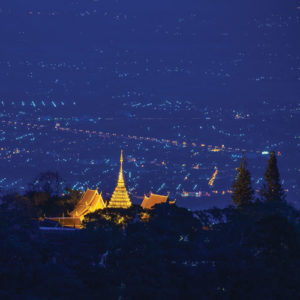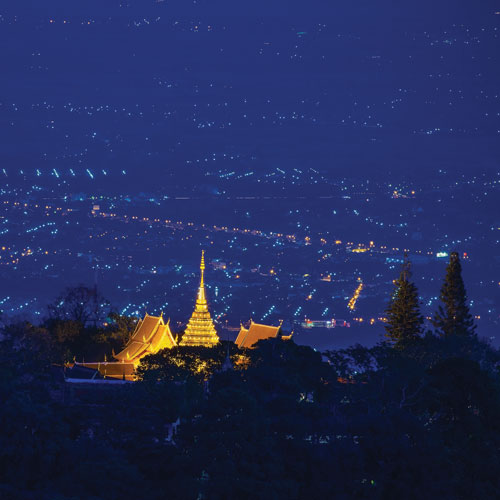The new crop of travel trade shows in northern Thailand gives second-tier destinations like Chiang Mai a chance to shine.

With international arrivals reaching just under 30 million in 2015, a figure that was barely conceivable just a few years ago, Thailand’s tourism experts are now projecting 32 million arrivals this year. A bigger target, however, also brings with it the inevitable question of how to cope with the ever-increasing arrival numbers and manage tourism in a more sustainable way.
It is with the aim of diversifying market sources and spreading tourist footfalls beyond the key destinations of Bangkok and Phuket that the Tourism Authority of Thailand (TAT) finally turns its attention to Chiang Mai, which will be the host destination of Thailand Travel Mart Plus (TTM+) this year.
“This is a good opportunity for Chiang Mai,” said Juthaporn Rerngronasa, TAT’s deputy governor for international marketing Europe, Africa, Middle East and Americas. “Chiang Mai is ready to host major events, as it has a new convention centre and many boutique hotels. It is also the closest Thai city to the Greater Mekong Subregion countries.”
With the exception of one year when TTM+ was held in Pattaya, 13 of the past 14 editions had been held in the Thai capital since the show’s launch in 2001. This year’s show will be held at Chiang Mai International Exhibition and Convention Centre from June 8-10 under the theme, Smile with Us.
The novelty of Chiang Mai as a new event destination is also a strong drawcard for TTM+, claimed Juthaporn, with this year’s edition netting a stronger reception from buyers than previous years. As of February 11, there were 321 buyers and 305 sellers, marking the highest numbers for the show since its inauguration, according to officials.
Although Chiang Mai has in recent years acquired a glowing shine among mainland Chinese travellers following the success of the Chinese movie Lost in Thailand, Juthaporn admits that the city has yet to attain similar level of interest from other international markets like Europe.
TAT governor Yuthasak Supasorn said in a press statement: “The level of interest is also a very good indicator of the growing interest in Chiang Mai and the Northern Thailand region. Traditionally, the travel trade has featured the beach resorts of South Thailand in their programmes. Clearly, that will now change and help us meet one of our major objectives of shifting the location, which is to better balance the distribution of visitors all around the country and reduce congestion at the popular tourist spots.”
In February, PATA Adventure Travel and Responsible Tourism Conference and Mart was held in Chiang Rai, the northernmost province in Thailand, reflecting the association’s strategic “dispersal of tourists” move, said PATA CEO Mario Hardy.
“Chiang Rai is one of these destinations that has great potential,” he said. “I’m really pleased to know that the regions of Thailand are developing the MICE market; it’s a great way to get these destinations to be known by a larger number of people. It will boost their profile and hopefully encourage other event organisers to consider them in the future.”
However, with the proliferation of trade shows the likes of ASEAN Tourism Forum and ITB Asia in the region, in addition to other Mekong countries such as Vietnam and Cambodia launching their own tourism fairs, it remains to be seen if these events in northern Thailand will spark greater interest in Chiang Mai and Chiang Rai as travel destinations.
Trade members have also constantly urged the development of more domestic air links such as Chiang Mai-Phuket and Chiang Mai-Hua Hin, which will allow travellers to bypass Bangkok and pair the northern cultural cities with the beach destinations in the south.
This article was first published in TTG Asia, March 4, 2016 issue, on page 4. To read more, please view our digital edition or click here to subscribe.




















